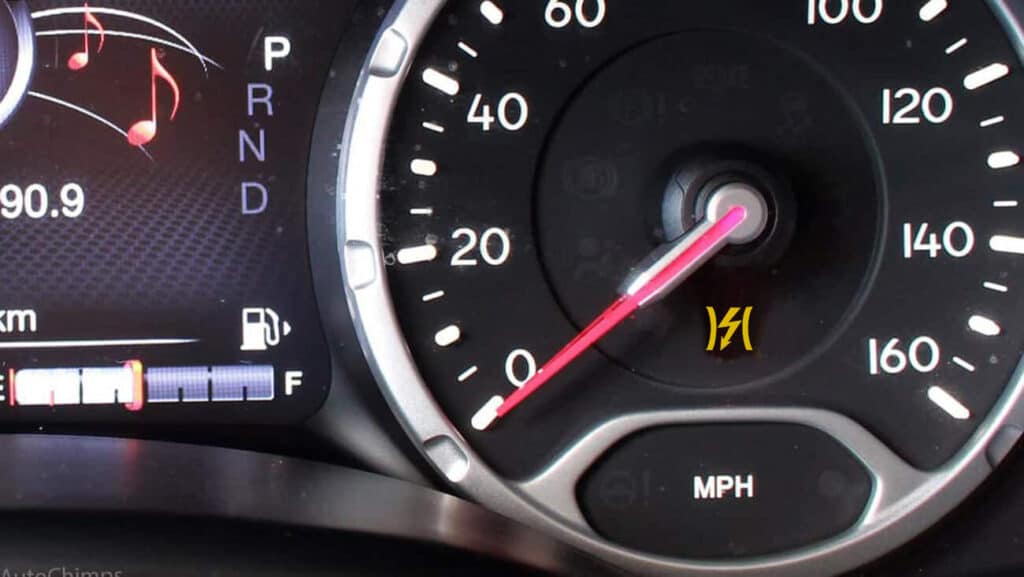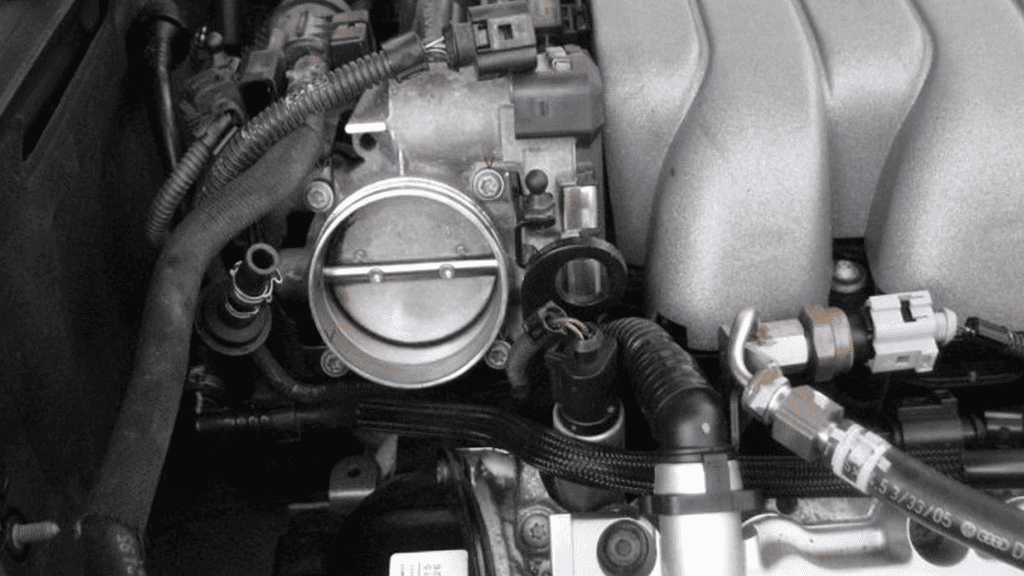Introduction: The Unseen Maestro of Your Vehicle – Understanding Electronic Throttle Control
Imagine the conductor of an orchestra, elegantly waving the baton to guide the ensemble into a harmonious symphony. Similarly, the Electronic Throttle Control (ETC) serves as the unseen maestro of your vehicle, orchestrating the delicate balance between air and fuel to govern engine performance. It’s more than just a system; it’s the backbone of modern vehicles, especially when it comes to fuel efficiency and reduced emissions.
Interpreting the Warning Light: What It Means When Electronic Throttle Control Light Comes On
You’re zipping down the highway, tunes cranked, thoroughly enjoying the drive. Just when you’re getting lost in the moment, an uninvited guest crashes the party—a warning light flashes on your dashboard. It’s the Electronic Throttle Control (ETC) indicator, symbolized by a lightning bolt icon. And no, this isn’t your vehicle’s way of auditioning for the next Harry Potter sequel. This icon is your car’s cry for help, a red flag that can’t be ignored.
The warning light’s appearance usually indicates that your vehicle’s ETC system is experiencing some sort of trouble that requires immediate attention. Now, ‘trouble’ can mean different things, ranging in severity from relatively minor issues to significant mechanical setbacks. A solid light often hints at a faulty sensor or perhaps a hiccup in the electrical system. While these are typically less severe, they shouldn’t be dismissed. Just like a cough or sneeze can be early indicators of a cold, these smaller issues can snowball into something much worse if not addressed.
On the other end of the spectrum, a flashing ETC light is akin to your car’s desperate scream for professional intervention. It could signify that the throttle control system is entirely out of whack, posing not only a performance issue but potentially a serious safety risk. At this point, your best course of action would be to pull over safely, turn off the engine, and seek immediate professional assistance.

Is It Safe to Drive? The Risks of Ignoring a Bad Electronic Throttle Control
If you’re wondering whether you can motor on with a malfunctioning ETC system, the short answer is, it’s risky:
• Unexpected Acceleration: One of the more disconcerting aspects of a faulty Electronic Throttle Control is inconsistent acceleration. You might find your vehicle struggling to pick up speed or, conversely, accelerating unpredictably. This unpredictability makes it a hazard not just for you, but for other drivers on the road.
• Reduced Fuel Efficiency: Your car’s throttle system is designed to optimize fuel consumption. A malfunctioning ETC can throw that balance out of whack, leading to poor fuel economy. It might not sound like a life-and-death situation, but in the long run, it can have a significant impact on your wallet and the environment.
• Engine Shutdown: In worst-case scenarios, a failing ETC system could result in a complete engine shutdown while you’re driving. The risk is similar to pulling the plug on a computer without shutting it down first—sudden, jarring, and potentially harmful to the machine (or vehicle, in this case).
• Check Engine Light: The appearance of the ETC warning light often accompanies the dreaded check engine light. Both warnings can indicate a range of issues from minor to severe, but when they light up together, it’s a sign that immediate attention is required.
• Safety Concerns: Beyond the vehicle itself, continuing to drive with a problematic ETC poses a broader safety risk. Difficulties in accelerating or decelerating can make it challenging to adapt to changing traffic conditions, posing a risk to both you and other road users.
• Long-Term Damage: Ignoring the issue can lead to other problems down the line, including damaging other parts of the vehicle that have to compensate for the malfunctioning ETC. The domino effect of neglect could result in even costlier repairs in the future.
The DIY Angle: How to Fix and Clean an Electronic Throttle Control at Home
If you’re a hands-on type who enjoys tinkering, you might be tempted to roll up your sleeves and address an Electronic Throttle Control (ETC) issue yourself. Good news: in some instances, you can. But let’s keep it real; this isn’t a home renovation show. It’s your car, a complex machine, and you don’t want to get too adventurous unless you know what you’re doing.
For a simple cleaning, often all you need is a specialized throttle body cleaner, a wrench set, and a good old shop rag. First, you’ll want to disconnect the negative battery terminal to ensure there’s no power running through the system. Then, locate the throttle body—typically near the air intake—and remove it. A quick spray-down with the cleaner and some delicate scrubbing should remove dirt and grime that may be hindering performance. Reassemble the parts, reconnect the battery, and you’ve potentially saved yourself a trip to the mechanic for a basic cleaning job.
However, let’s draw the line at cleaning. If you suspect your ETC issue may involve something more complex, like sensor recalibration or an electrical fault, it’s best to bow out gracefully and let the professionals take the stage. While YouTube tutorials and DIY blogs make it seem easy to handle complex repairs, the stakes are higher than you might think. The ETC controls essential vehicle functions like acceleration and engine output; you don’t want to mess that up. A seemingly small error on your part could compromise the entire system, leading to performance issues or even serious accidents.
Testing and Troubleshooting: How to Test the Throttle Control Sensor
• Understanding Performance Metrics: Think of your car’s ETC system as a symphony in which every instrument needs to be in tune. To gauge how well it’s performing, specialized diagnostic tools are available. These tools connect directly to the system and can offer real-time performance metrics.
• Diagnostic Tools: OBD-II scanners are commonly used to gather this data. They can reveal issues like sensor malfunctions, electrical problems, and communication errors within the system.
• Testing Procedure: Usually involves plugging the tool into the OBD-II port, usually located under the dashboard. Once connected, the tool will present codes that correspond to different issues in the ETC system.
• Interpreting Results: Each code will indicate a specific issue. For example, if the throttle control sensor is faulty, a particular trouble code will appear, such as P0121 or P0122.
• When to Seek Professional Help: While these tools can provide insights, interpreting the data correctly and taking appropriate action requires expertise. If you’re not experienced with automotive diagnostics, it’s wise to consult a professional.
The Hidden Variables: Battery Issues and Sensor Locations
• The Battery’s Role: It’s easy to overlook, but a weak or dying battery can create chaos in the ETC system. A low battery may not provide enough power for the system to function optimally, triggering the warning light.
• Symptoms of a Bad Battery: Slow cranking, dimming headlights, and weak horn are signs that your battery might be the culprit affecting your ETC system.
• Sensor Locations: Understanding where the throttle control sensor is located can make a world of difference when diagnosing issues. Typically, you’ll find this sensor near the throttle body inside the engine bay.
• Accessibility and Complexity: Although knowing the location is beneficial, the act of replacing or repairing the sensor is not a simple plug-and-play operation. It often involves disassembling parts and precise calibration.
• When Skilled Hands Are Needed: Replacing or repairing the throttle control sensor is a task best left to experts. Incorrect installation or calibration can worsen the problem, leading to more expensive repairs down the line.

Counting the Cost: Repairs Related to Warning Light and Financial Considerations
Your pocket is inevitably impacted when the ETC requires professional attention. Minor repairs might start from $100, but complex issues can go well beyond $500. Financial prudence advocates that paying attention to this early-warning system can save you more in the long run.
Conclusion: Mastering the Intricacies of Your Electronic Throttle Control System
In a world where car technology evolves rapidly, mastering the ins and outs of your Electronic Throttle Control system can be the difference between smooth drives and roadside hitches. And if you find yourself overwhelmed by the complexities, don’t hesitate to seek professional help. For those in Canada, Uchanics mobile mechanic services are a convenient and trustworthy option for all your ETC needs.
Let’s keep the internal symphony of our cars melodious, and our drives safe. Tune in with Uchanics for all your ETC needs.
